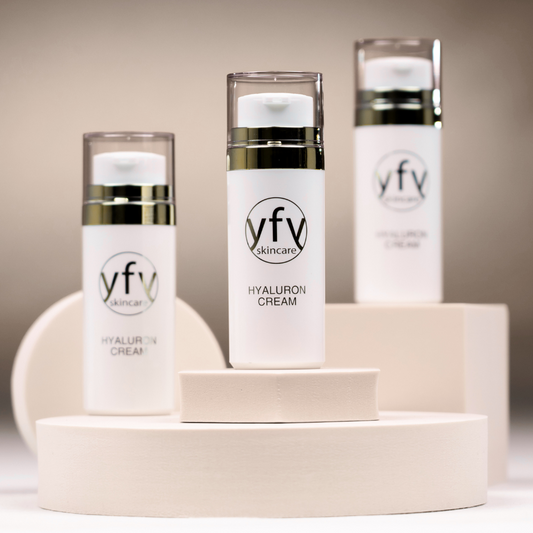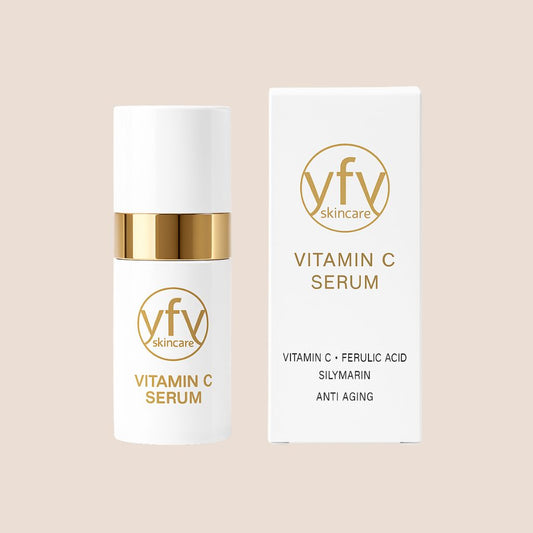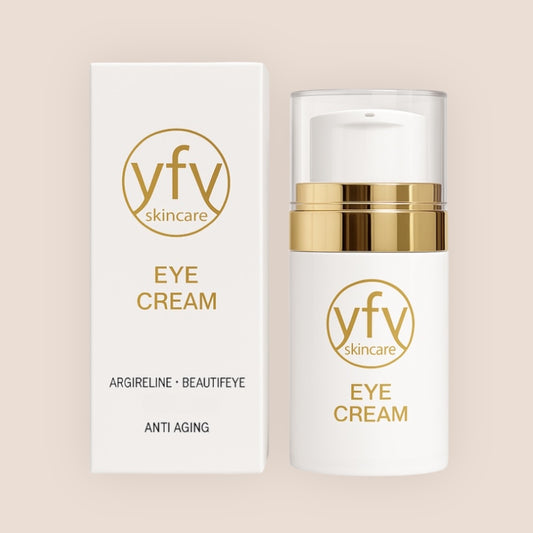
Hyaluronic acid or collagen - which is better?
shares
Hyaluronic acid or collagen
Two of the most important active ingredients in beauty and cosmetic products are hyaluronic acid and collagen. Both are endogenous substances whose production decreases with age. As soon as the skin loses its elasticity, both are reliable helpers and ideal for the quickly visible anti-aging effect. They can be applied to the skin from the outside and rejuvenate the skin, reduce wrinkles, ensure a radiant complexion and make the skin firmer and plumper. The reason for this is the valuable properties that both components possess. The comparison shows which active ingredient in creams and care products is better.
Hyaluronic acid – efficient water storage in connective tissue
At some point, aging becomes visible through external signs when the skin becomes thinner, the first wrinkles form and the complexion changes permanently. One reason for this is the decreasing production of the body's own hyaluronic acid, which is found in connective tissue as well as in muscles, joints and bones. As a gel-like liquid, it surrounds the cells in an extracellular matrix and is able to bind a very large amount of water. It is a polysaccharide and is used in the body to fill and support the connective tissue between the skin cells. In addition, it lubricates the joints and generally regulates the overall moisture content of the skin.
If production decreases with age, the structure of the skin changes. It becomes drier, more vulnerable, less firm and forms wrinkles. What remains positive is that hyaluronic acid can also be absorbed through the skin and smooths and plumps up the connective tissue. The active ingredient is therefore contained in many beauty and anti-aging products, preferably in creams and serums. As a supplement, it transfers the natural properties of the body's own substance and acts as an antioxidant against free radicals, which further improves the complexion. It is a true moisture booster and ensures a radiant and refreshed complexion.
Types of hyaluronic acid
Hyaluronic acid is available in high molecular and low molecular versions. With high-molecular hyaluronic acid, the molecules are large and work primarily on the upper layer of skin to form a protective barrier and bind moisture. The skin becomes fresher and smoother. The low-molecular variant penetrates into the deeper layers of the skin and has a good long-term effect. The molecules are smaller and overcome the skin barrier, so that the connective tissue is plumped up from the inside and wrinkles are visibly smoothed.Collagen – the structural protein of the skin
Collagen is also considered an effective remedy against the aging process and can be supplied externally. It has been proven in scientific studies to slow the external signs of aging and reduce wrinkles. In the body, it consists of a number of different structural proteins, which make up about a third of the total amount of protein and are found in the skin and in bones, cartilage, joints, muscles and teeth. The protein serves as an indispensable support and creates a collagen structure in the body, which results in smooth and firm skin, strengthens the bones and keeps the connective tissue elastic. The gelatine made from collagen peptides has a binding function and, like hyaluronic acid, is no longer produced sufficiently by the body over time.
Today there is a wide variety of cosmetic products that contain collagen as an active ingredient, which can also be absorbed in capsules and powders. Creams, serums, hydrogels and face masks are enriched with the structural protein, which naturally occurs primarily in the deeper layers. The use of creams with this ingredient is recommended from the age of 25, as collagen formation gradually decreases. The reason for this is growth factors and signaling substances that change with age and make the collagen fibers more brittle and cracked.
The different types of collagen
The collagen structural protein family includes 28 different types, with three types being particularly important for the beauty and anti-aging effect. These are type I for skin, bones, fascia, vessels and internal organs, type II for cartilage and the vitreous body of the eye and type II for skin, blood vessels and uterus. When combined, all three types have a very efficient effect. Type I and Type III are particularly important.The differences between collagen and hyaluronic active ingredients
While hyaluronic acid stores water and restores more moisture to the skin, collagen structural proteins ensure more elasticity, smoothness and firmness. Hyaluronic acid penetrates into the dermis if it consists of small active ingredient molecules. It supports cell formation, stores moisture over a longer period of time and makes the skin plumper and firmer. The collagen protein, on the other hand, improves the upper layer of skin and visibly reduces wrinkles. With the right selection of care products, both active ingredients support the anti-aging effect. Hyaluronic acid has a filling effect, collagen has a stabilizing function.Which of the two active ingredients is better in care products?
The properties of both active ingredients show that they are perfectly coordinated as substances and both contribute to a youthful, fresh and beautiful complexion. That's why they are often combined in cosmetic products and together they provide the anti-aging effect. This is demonstrated by hyaluronic acid's ability to retain moisture, while collagen protein acts as a supportive cushion and gives the skin more structure.
The sagging of the various areas of the face is slowed down and the quality of the skin is significantly improved. Together, the substances increase skin moisture, reduce the depth of wrinkles, reduce skin discoloration and water loss, have a firming effect and make the skin smoother and more elastic. In combination, the collagen structural proteins increase the amount of polysaccharides, which also includes hyaluronic acid. The latter also stimulates collagen formation and also promotes wound healing. The mutual effect of each other significantly increases the effectiveness of creams and serums.
Advantages of both active ingredients in creams and other cosmetic and care products
Care products that combine both active ingredients prove to be a very effective aid for daily care with an anti-aging effect. Both work individually and on each other, making the complexion shine and firming the skin sustainably. A combination of low and high molecular hyaluronic acid alongside the collagen content is also very good. This enables a long-lasting effect with visible wrinkle reduction.The benefits of hyaluronic acid in creams are:
- Effective moisture booster
- Penetration of the active ingredient into the deeper layers of the skin
- Wrinkle smoothing and plumping effect
- Antioxidant against free radicals
- Stimulates natural hyaluronic production
- Promote collagen formation
- Excellent compatibility for all skin types
- Stabilization of the skin structure
- Smoothing and firming skin effect
- Reduction of wrinkles
- Effect on the skin surface for a quickly visible result
- More elasticity for the skin
- Supports the formation of hyaluronic acid
- Excellent compatibility thanks to the body's own substance



